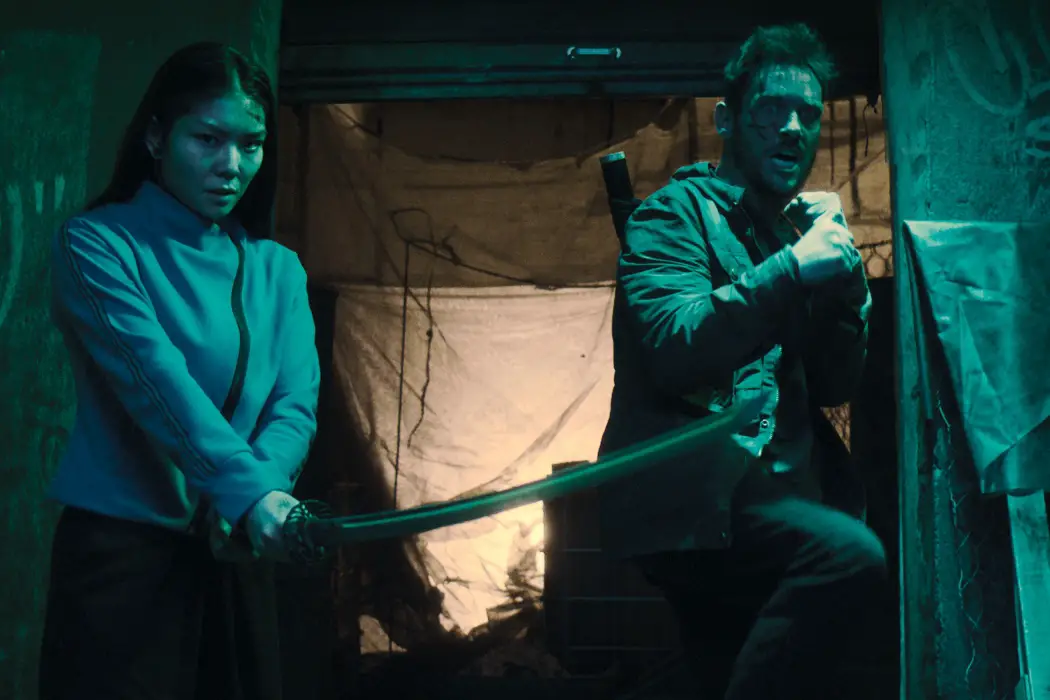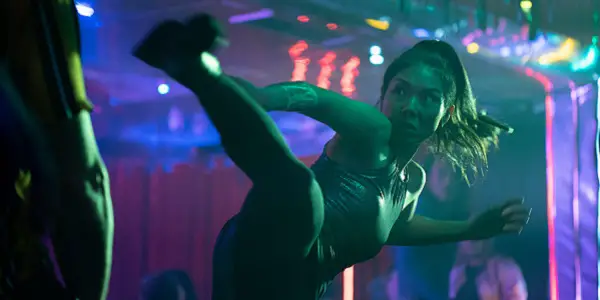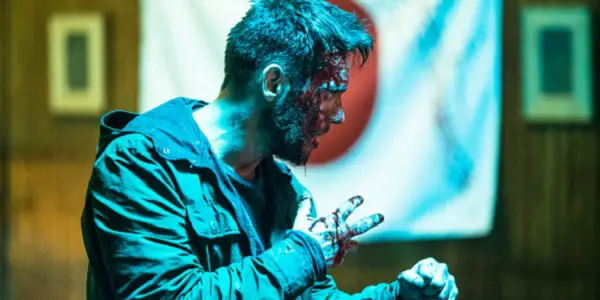YAKUZA PRINCESS: A Blunted Sword

Lee Jutton has directed short films starring a killer toaster,…
The largest Japanese diaspora in the world can be found in São Paulo, Brazil. That city’s neon-lit street markets and shadowy back alleys form the setting of Yakuza Princess, an action thriller adapted from Danilo Beyruth’s graphic novel Samurai Shiro. Co-written and directed by Brazilian filmmaker Vicente Amorim, Yakuza Princess stars Japanese singer-songwriter Masumi as a young woman living in São Paulo who discovers she is heiress to half of Japan’s yakuza crime syndicate — and the other half is trying to kill her. Yet when one looks beyond the immediate novelty of the film’s title, one is taken aback by how dull and derivative Yakuza Princess actually is.
Journey to the Past
Akemi (Masumi) is mourning the recent murder of her grandfather in what was declared an attempted robbery. He was carrying a strange symbol on a piece of cloth when he died; Akemi has it tattooed on her arm in memory of him. Now that she’s alone, apart from a couple of friends and the sensei who is teaching her kendo, she’s contemplating a return to the country of her birth, which she barely remembers. This is because she was smuggled out of the country as a baby after her mother, father and brother were all brutally murdered by their rivals in the yakuza.

Akemi has no idea that in the world of the yakuza she is essentially royalty — that is until an amnesiac foreigner (Jonathan Rhys Meyers) shows up on her doorstep with an ancient sword. He has no idea who he is, or why he has the sword, but he believes it ties his fate together with Akemi’s. As Akemi follows a trail of enigmatic clues — including that strange symbol — that reveals who she really is, her family’s enemies in the yakuza are hot on her tails, desperate to wipe out the last remaining member of her family before she can take what is rightfully hers.
Expectations vs. Reality
One cannot help but have their interest piqued upon hearing the title Yakuza Princess — at least, I couldn’t. Alas, the film does not live up to what I admit were probably too lofty of expectations. I was expecting an exciting, female-driven adventure with a lot of quality swordplay, something savagely violent and yet perhaps verging on camp; what I got was a dour drama that dragged on far longer than was necessary. The film’s biggest asset is its São Paulo setting, which, as filtered through the lens of cinematographer Gustavo Hadba, provides a gorgeous yet suitably gritty backdrop for the bloodshed that occurs throughout the film. However, nearly everything else about Yakuza Princess is a disappointment.
Masumi is gorgeous, but with the exception of a scene when she gets up in a club to sing — so, you know, playing to her natural strengths — she’s not a very engaging actress. One can place a good portion of the blame on the dialogue, which is pretty bland; the script, co-written by Amorim with Fernando Toste, Kimi Lee, and Tubaldini Shelling, is packed with platitudes one has heard in these kinds of movies a million times before: “This is not my war.” “It is your war!” In scenes like these, it’s hard to imagine half of the sprawling yakuza empire coming together to pay fealty to Akemi, which means it’s really hard to root for her to come into her own and take over the syndicate.

Fortunately, she is a keen hand with a sword, though I did find it somewhat amusing that a woman could so easily go from studying kendo in the studio to slicing off limbs and heads with no struggle or hesitation. (To be fair, the sword is supposed to contain the demons of everyone who has been killed with it prior—maybe that helps.) But even the fight sequences in Yakuza Princess leave a lot to be desired, filled as they are with so many cuts that one cannot fully appreciate the flow of the action. The best occurs relatively early in the film when Akemi is forced to defend herself against a gang of would-be rapists who have followed her into her apartment, mostly because it is absolutely delightful to see those men get what is coming to them — and, in my viewing experience, the smaller the space, the more adrenaline-fueled the fight.
Masumi isn’t the only actor who struggles to maintain the audience’s interest in Yakuza Princess; Jonathan Rhys Meyers, who I have been a fan of for years, lacks the fire and fury that he brought to his most memorable roles, such as King Henry VIII in The Tudors and Steerpike in Gormenghast. If any criticism can be leveled towards Meyers’ particular style of acting, it is that he has a tendency to go over the top; here, he is so dialed-back that he feels like he is sleepwalking through the film. Fortunately, Tsuyoshi Ihara, as Akemi’s ally Takeshi, energizes every scene he is in; unfortunately, that’s not as many as I would have liked, though his final scene is by far the coolest in the whole damn movie.
Conclusion
The ending of Yakuza Princess sets the stage for a sequel that has the potential to be much more entertaining; after all, now that Akemi knows and accepts who she is, there’s no reason not to jump straight into the action in any future installments of her story. Still, after sitting through the slog that was Yakuza Princess, I’m not sure I’m willing to take the risk.
What do you think? What is your favorite yakuza movie? Share your thoughts in the comments below.
Yakuza Princess is released in the U.S. on September 3, 2021. You can find more international release dates here.
Watch Yakuza Princess
Does content like this matter to you?
Become a Member and support film journalism. Unlock access to all of Film Inquiry`s great articles. Join a community of like-minded readers who are passionate about cinema - get access to our private members Network, give back to independent filmmakers, and more.
Lee Jutton has directed short films starring a killer toaster, a killer Christmas tree, and a not-killer leopard. Her writing has appeared in publications such as Film School Rejects, Bitch: A Feminist Response to Pop Culture, Bitch Flicks, TV Fanatic, and Just Press Play. When not watching, making, or writing about films, she can usually be found on Twitter obsessing over soccer, BTS, and her cat.













